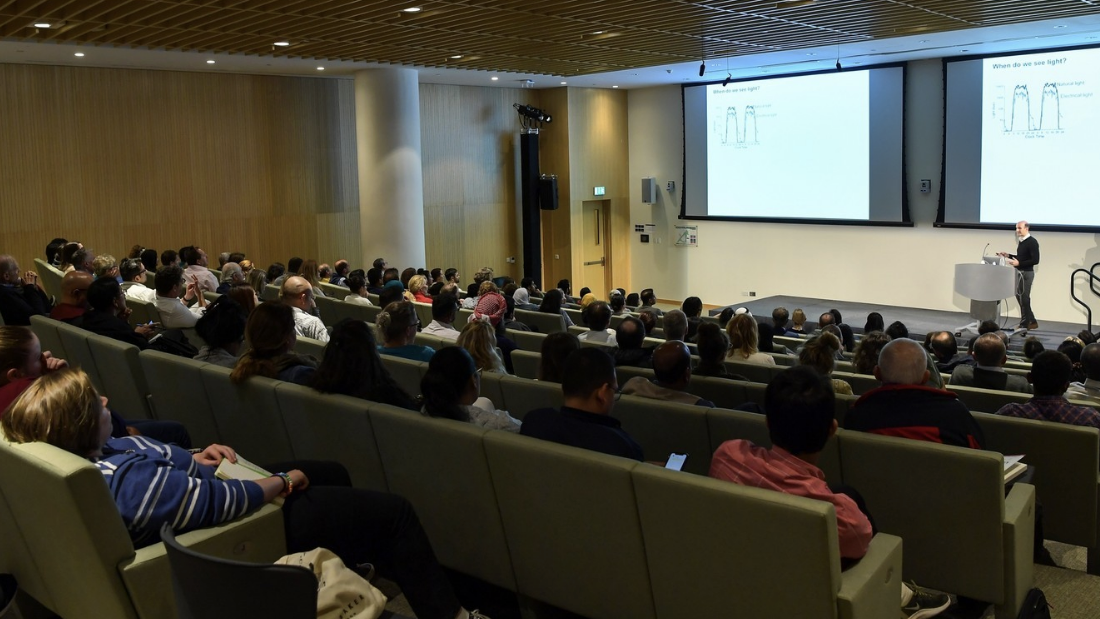Teaching

Awards:
NYU CAS Golden Dozen Award 2025
NYU CAS Golden Dozen Award 2013
Justin’s main teaching is Molecular and Cell Biology I (BIOL-UA 21), a large undergraduate class typically taken by second and third year Biology and Neural Science majors. He also contributes to the Biology Department’s Biocore 4 class and the Medical School’s Advanced Topics in Molecular Neurobiology class. In the past, Justin has taught a range of courses including The Art of Scientific Investigation, which he developed to teach PhD students how to communicate science effectively, Genes & Animal Behavior and courses for non-majors including Behavior, Immortality and The Future of Medicine.
Justin co-organizes CURB, an annual research conference for Biology undergrads from years 2-4 to present their research via posters and talks. And his mentorship of CAS undergraduates helped two of them become 2025 HHMI Gilliam Fellows.
Teaching philosophy – written for the NYU Golden Dozen Award 2025:
My teaching philosophy is simple: “I like to make students think.”
My main current teaching is Molecular & Cellular Biology I (MCBI), a large class taken by all Biology and Neural Science majors. Although there are ~320 students in the class, I make the course feel like an interactive seminar as far as possible. Having short pre-class videos allows time for group problem-solving in class – and so we mimic what happens in a research lab, with students working in small groups to interpret data and design experiments. Molecular biology also lends itself to real world applications used in modern medicine, which appeals to the largely pre-med MCBI students. I also show the students that biology is a living subject by highlighting recent breakthroughs, and challenging them to think about unsolved questions.
So perhaps my philosophy is more accurately, “I like to make students think like scientists.”
The problem-solving nature of the class encourages students to work together, which helps to build community. Both of these are reinforced by weekly recitations run by TAs, and optional MCBGroup review sessions that I run on Wednesdays at 7.30pm, to which I bring healthy(-ish) snacks. Community-building is deeply needed for NYU students in large STEM classes.
I enjoy finding new ways to present challenging concepts, such as restriction enzymes, for which I made a series of Powerpoint animations featuring flying DNA Lego blocks. I find myself to be quite spontaneous in class: Fall 2024 saw an unplanned role play of RNA polymerase in action, and a role play of the Lac operon. I also try to link to what students learn in other classes: in Fall 2024, I switched the way we teach dissociation constants to the ICE method taught by John Halpin in General Chemistry, which MCBI students have already taken.
Many MCBI students ask to join my lab. I typically accept 2-3 students each year, and try to advise the others how to find labs. I now directly supervise the undergrads in my lab, and I have been delighted with their achievements. For example, data from a May 2024 graduate was the foundation of one third of my recent NIH grant that was funded. This should become a paper this summer with two undergrads as the first two authors. I really enjoy having undergrads in the lab, and they often try out new projects. I encourage them to think like scientists – and to bring their knowledge from other classes. This is typified by a May 2025 graduate, who taught me what she learned about membrane lipids in her Biochemistry class. This has helped her single-handedly take a project from scratch all the way to a paper we will co-author together, including a clever membrane lipid experiment.
Finally, Duncan Smith and I created CURB, an annual research conference for Biology undergrads from years 2-4 to present their research via posters and talks. And to think with each other. And to build community.